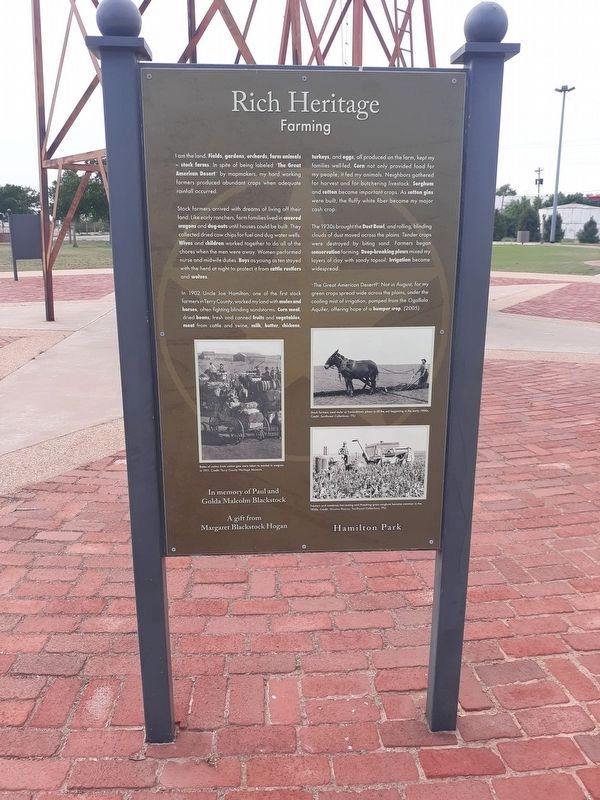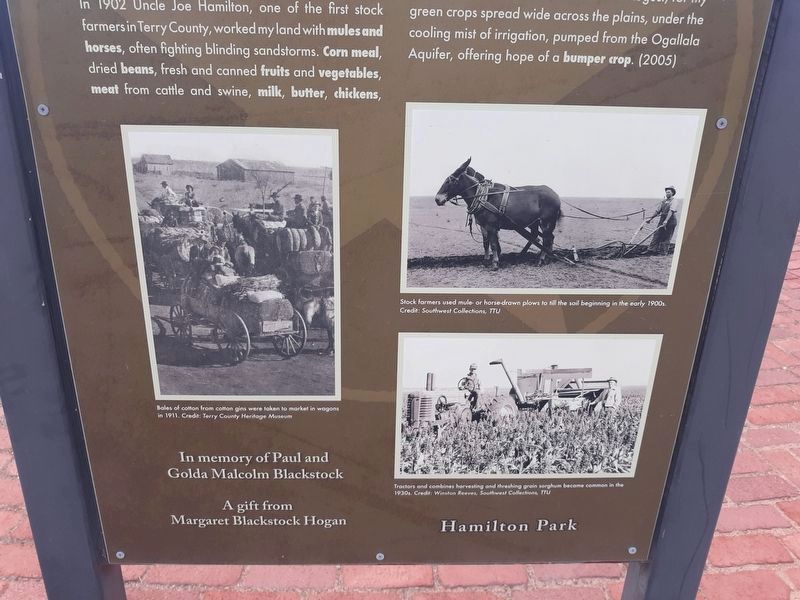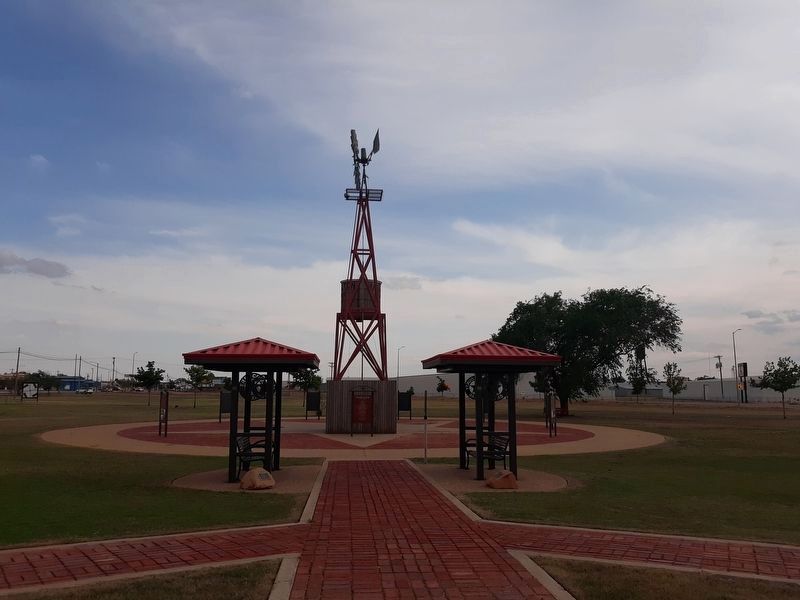Farming
Rich Heritage
— Hamilton Park —
I am the land. Fields, gardens, orchards, farm animals - stock farms. In spite of being labeled "The Great American Desert” by mapmakers, my hard working farmers produced abundant crops when adequate rainfall occurred.
Stock farmers arrived with dreams of living off their land. Like early ranchers, farm families lived in covered wagons and dug-outs until houses could be built. They collected dried cow chips for fuel and dug water wells. Wives and children worked together to do all of the chores when the men were away. Women performed nurse and midwife duties. Boys as young as ten stayed with the herd at night to protect it from cattle rustlers and wolves.
In 1902 Uncle Joe Hamilton, one of the first stock farmers in Terry County, worked my land with mules and horses, often fighting blinding sandstorms. Corn meal, dried beans, fresh and canned fruits and vegetables, meat from cattle and swine, milk, butter, chickens, turkeys, and eggs, all produced on the farm, kept my families well-fed. Corn not only provided food for my people, it fed my animals. Neighbors gathered for harvest and for butchering livestock. Sorghum and cotton became important crops. As cotton gins were built, the fluffy white fiber became my major cash crop.
The 1930s brought the Dust Bowl, and rolling, blinding clouds
of dust moved across the plains. Tender crops were destroyed by biting sand. Farmers began conservation farming. Deep-breaking plows mixed my layers of clay with sandy topsoil. Irrigation became widespread.
"The Great American Desert?” Not in August, for my
green crops spread wide across the plains, under the
cooling mist of irrigation, pumped from the Ogallala
Aquifer, offering hope of a bumper crop.
Erected 2005.
Topics. This historical marker is listed in these topic lists: Agriculture • Industry & Commerce. A significant historical year for this entry is 1902.
Location. 33° 11.682′ N, 102° 16.508′ W. Marker is in Brownfield, Texas, in Terry County. Marker is on Lubbock Road (U.S. 62), on the right when traveling south. The marker is on the grounds of Hamilton Park. Touch for map. Marker is in this post office area: Brownfield TX 79316, United States of America. Touch for directions.
Other nearby markers. At least 8 other markers are within walking distance of this marker. Ranching (here, next to this marker); Oil and Gas (here, next to this marker); Law and Order (a few steps from this marker); Business (a few steps from this marker); Patriotism (a few steps from this marker); Flora and Fauna (a few steps from this marker); The Land (a few steps from this marker); Religion, Education, and Medicine (a few steps from this marker). Touch for a list and map of all markers in Brownfield.
Credits. This page was last revised on January 14, 2021. It was originally submitted on January 12, 2021, by Craig Doda of Napoleon, Ohio. This page has been viewed 92 times since then and 4 times this year. Photos: 1, 2, 3. submitted on January 12, 2021, by Craig Doda of Napoleon, Ohio. • J. Makali Bruton was the editor who published this page.


